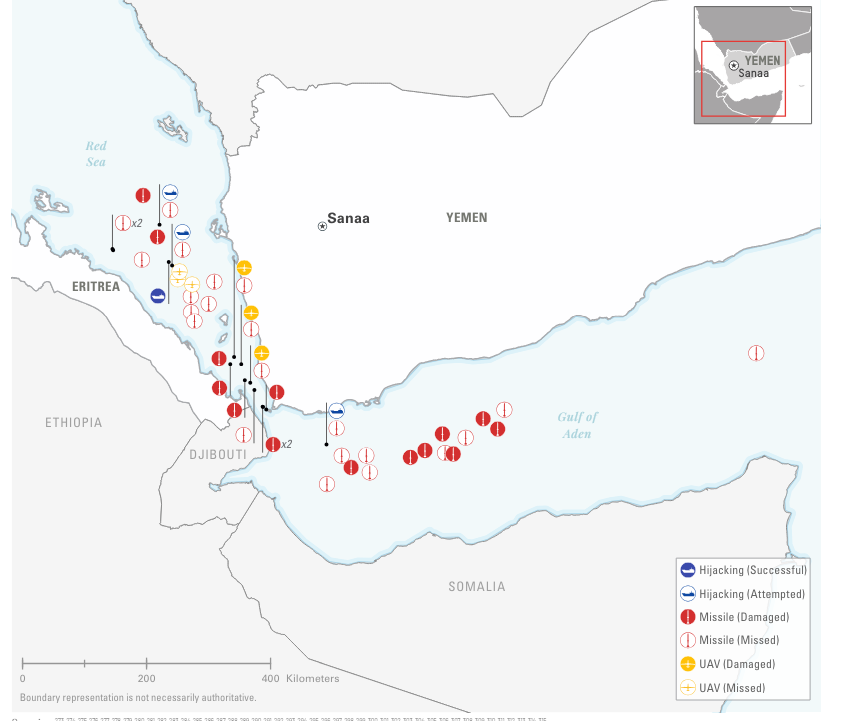The Houthis, a group backed by Iran, have been causing quite a stir in the high seas. In a recent report from the Defense Intelligence Agency (DIA), the group’s relentless attacks on commercial shipping in the Red Sea and Gulf of Aden are putting the squeeze on international trade. And it’s not just a handful of nations feeling the heat – the report reveals that a whopping 65 countries are caught in the crossfire.
In a rare public assessment, the DIA has spilled the beans on the havoc wreaked by Houthi attacks on commercial vessels in the Red Sea. The numbers are staggering – a whopping 90% decline in container shipping between December 2023 and February 2024. The impact? A massive 10-15% dent in global maritime trade.
Alternative shipping routes around Africa are adding a cool 11,000 nautical miles to each journey, racking up an extra $1 million in fuel costs per voyage. It’s not just businesses that are hit – humanitarian relief efforts are also feeling the pinch with aid to Sudan and Yemen getting delayed due to longer routes.
Since November 2023, the Houthis have been on a rampage, launching dozens of strikes on ships sailing through this crucial global trade route. Their actions have endangered crews, disrupted regional security, and put the brakes on humanitarian relief efforts. The report also points out that nearly 30 major energy and shipping companies have had to change their routes, leading to increased operating costs.
But that’s not all. The Houthis’ aggressive tactics have even affected some unexpected players, including Iran. This highlights the complex web of geopolitical interests at play in the region, as tensions continue to escalate.
Shipping companies are now facing skyrocketing insurance premiums and the situation has become so dire that even transits through the Suez Canal are feeling the pinch.
With the far-reaching consequences of the Houthis’ actions now laid bare, it’s clear that the global community must act swiftly to address the crisis. The question remains: how will world leaders respond to this growing threat, and what does the future hold for maritime trade in this volatile region?


